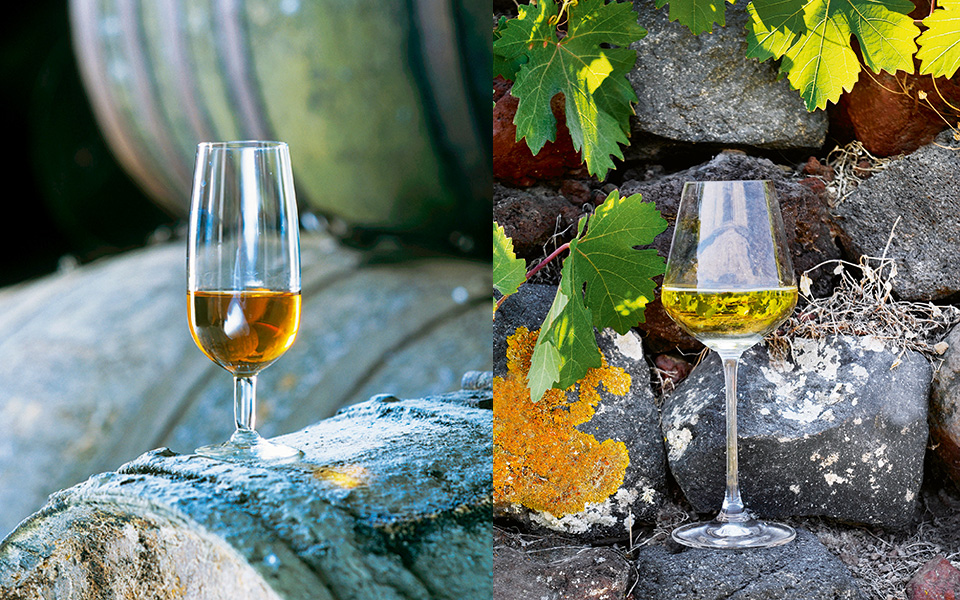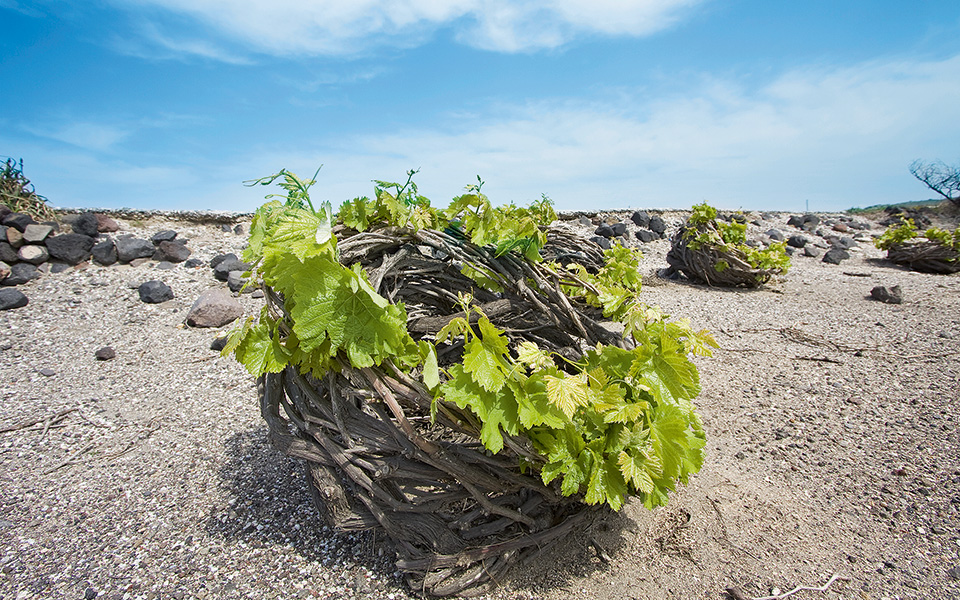Corfu in a Glass: 6 Wines to Explore...
Explore Corfu’s once-forgotten vineyards and discover...

Vinsanto & Assyrtiko
© (L) VisualHellas.gr , (R) Vangelis Zavos
VINSANTO
THE HOLY WINE
“As a dessert wine, none can compare to the white Vinsanto. It is made of grapes left in the sun for a fortnight on the rooftops of houses, before going to the press. One year later, they become an excellent sweet wine,” writes French 19th-century traveler Louis Lacroix (“Les îles de la Grèce,” 1853).
Vinsanto may stem from the ancient Greek raisin wine served at symposiums or Hesiod’s vinicultural traditions, while there are conflicting theories as to the name’s provenance: “vino santo” or “holy wine,” as some believe, or “vino di Santorini” or “wine of Santorini.” Whichever is right, it does not change its international appeal.
Only the white Vinsanto can claim a Protected Designation of Origin (PDO). It is made mainly of mature Assyrtiko, Aidani and Athiri grapes, and occasionally with small quantities of rarer endemic varieties such as Katsano, Gaidouria or Platani. When young, Vinsanto has a soft orange color with golden highlights, turning amber-red as it ages. It has complex layers, with a full body and lingering aftertaste.
Serving temperature:
chill to 10-12 C
Pairs with blue or yellow cheeses,
or tarts A younger Vinsanto stands
well beside rich savoury foods

The techinque of pruing the Santorini vines is aged-old and us known in greek as "koloura."
© Shutterstock
ASSYRTIKO
THE FLAGSHIP VARIETY
The unique indigenous grape variety has the unusual quality of maintaining high levels of alcohol and acidity at the same time with long aging potential. If one adds the fine aromas (citrus, peach, apricot, pineapple, green apple, pear), characteristic mineral or metallic hints, depth and complexity of flavor, it becomes clear why Assyrtiko is considered the finest white in Greece and one of the leading wines in the world.
Assyrtiko is ideal for those who love wines with an unconventional, vibrant style and attach importance to structure and density. It is extremely food-friendly, one might say a passe-partout wine, in all its versions (fresh or barrel-aged). It pairs admirably with fish and seafood, chicken, pork, lamb and grilled meats, cheese, cured meats, smoked fish (especially salmon), salads, oil-rich vegetable casseroles, risotto, pasta with white sauces, cheese pies, spinach pies, most small dishes of Greek and Mediterranean cuisine, and of course sushi. Indeed, this latter pairing has become a must in many sushi bars around Europe, quickly gaining a fanatic following.
Serving temperature:
9-10 C (fresh), 10-12 C (aged)
Extremely food-friendly in all its versions
Assyrtiko pairs with seafood and fresh oysters to meat dishes.
Explore Corfu’s once-forgotten vineyards and discover...
Since 1928, this family-run wine taverna...
Climate change brings water scarcity and...
From Santorini sunsets to ancient ruins,...